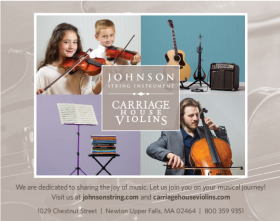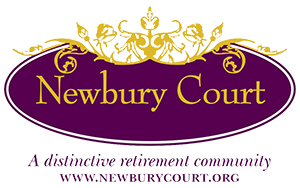Search
Saturday, December 15, 2018, Emmanuel Church, Boston
Sunday, December 16, 2018, First Unitarian Church, Worcester
Sinfonia from O Wunder, BR‑WFB F 2 Wilhelm Friedemann Bach (1710-1784)
Sei wilkommen from Ehre sei Gott in der Höhe, H.811 Carl Philipp Emanuel Bach (1714-1788)
Herr, dein Wort, das ist geschehen from Mache dich auf, JLB-9, Johann Ludwig Bach (1677-1731)
Pastorale in F Major, BWV 590 (fourth movement) Johann Sebastian Bach (1685-1750)
Frohe Hirten eilt from Christmas Oratorio, BWV 248 J. S. Bach
Fecit potentiam from Magnificat, H.772 C. P. E Bach
Canonic Variation on Vom Himmel hoch, BWV 769 J. S. Bach
Vom Himmel hoch chorale (all sing)
Intermission
Die Kindheit Jesu Johann Christoph Friedrich Bach (1732-1795)
Jessica Petrus, soprano; Catherine Hedberg, alto; Jonas Budris, tenor; Bradford Gleim, baritone
Suzanne Stumpf and Rachel Carpentier, traversi; Sarah Darling and Jesse Irons, violins
Jason Fisher, viola; Daniel Ryan, cello; Michael Bahmann, harpsichord
Program Notes
Generations of the very musical Bach clan held numerous church positions throughout the 18th-century. As part of their responsibilities, they were required to pen new works throughout the liturgical year, resulting in a rich surviving cache of sacred works for the Christmas season. Our selections for this program offer a prism of five unique voices from two generations of the Bach family: the great Johann Sebastian, his cousin Johann Ludwig, and three of his talented sons, Wilhelm Friedemann, Carl Philipp Emanuel, and Johann Christoph Friedrich.
Enlightenment era thinking was gradually taking hold through the course of the 18th century, influencing musical style, accessibility to performances, and the livelihoods of musicians. There is great debate about J. S. Bach’s attitude with regard to Pietism versus Rationalism. In examining the evidence, Bach’s broad interests as revealed in his personal library result in the impression that he played his cards pretty close to his chest. However, Bach’s association in 1747 with the Society for Musical Sciences, the so-called “Mizler Society”—a colloquium of mathematicians, philosophers, and artists dedicated to mathematical rubric—is a sign of his intellectual, if not progressive, thinking. Many of his sons—such as the three featured on this concert—openly enjoyed their associations with various prominent Enlightenment thinkers. In addition to being a renowned musician, W. F. Bach was devoted to the study of mathematics. He also eventually became one of the first freelance musicians, focusing his livelihood on musical instruction. C. P. E. Bach worked in the service of one of the era’s great arts patrons, Frederick the Great, before moving to the Hanseatic City of Hamburg. There, he followed in his godfather Telemann’s footsteps as the city’s director of music and was known for his wit, humor, and open-mindedness while he hobnobbed with philosophers, theologians, poets, and scientists. J. C. F. Bach, the youngest of our featured composers, was exposed to Enlightenment thinking through his association with his librettist at Bückeburg, Johann Gottlieb Herder (1744-1803). J. C. F. Bach’s musical compositions likewise reveal in themselves an inclination towards Enlightenment taste with their emphasis on winning melodies over contrapuntal complexity.
Our chosen works of the elder Bachs—J. S. and his cousin Johann Ludwig—exemplify a more traditional German Baroque style. Ludwig, a second cousin to Johann Sebastian, was born outside Eisenach and joined the court at Meiningen as violinist in 1699, eventually becoming Kapellmeister in 1711. His aria Herr, dein Wort has a delightful gigue-like rhythm, with the voice duetting mellifluously with a solo treble (flute).
Johann Sebastian’s masterful aria Frohe Hirte from part II of his Christmas Oratorio, conveys the hurrying of the shepherds through virtuosic running passagework in the tenor and flute lines. The two instrumental works of J. S. on this program illustrate his genius for counterpoint. The fourth movement of his organ Pastorale in F Major is performed in a transcription by the ensemble for string trio, which brings out the densely imitative dialogue among the three lines. His Canonic Variations on Vom Himmel hoch (also originally for organ), from which the ensemble has excerpted Variation II, was composed for the Mitzler Society as a tour de force for the use of canonic possibilities.
J. S.’s eldest musical son Wilhelm Friedemann became known as a brilliant improviser on the organ and was recognized as the last great German Baroque organist. He held a couple of church positions, including one in Halle, where he ran into trouble due to his interest in modern Enlightenment philosophy and his inability to cooperate with the religious conservatism of the town rulers. The Sinfonia from his Christmas cantata O Wunder sets a celebratory atmosphere. Here W. F. Bach makes use of Empfindsamer Stil (“sensitive style,” emphasizing emotions), with sudden dynamic contrasts to build anticipation and excitement.
The composer most associated with the Empfindsamer Stil is J. S.’s second surviving son Carl Philipp Emanuel. While this trait is most evident in his instrumental works, it is a salient feature of the aria Fecit potentiam, from his Magnificat. In the soprano and bass duet Sei wilkommen, he defies Baroque convention by employing different musical melodies to a repeated single text through the course of the aria.
J. C. F. Bach spent the majority of his career in the service of Count Wilhelm of Schaumburg-Lippe in Bückeburg, where he composed the short oratorio Die Kindheit Jesu in 1772 for the birth of Countess Emilie Eleonore Wilhelmine. In composing this work, he collaborated closely with the philosopher, theologian, poet, and literary critic J. G. Herder (mentioned above), who served as the court preacher from 1771 to 1776. Herder was a protégé of Immanuel Kant and had a strong influence on Goethe after the two met in 1770. His oratorio texts, highly regarded by Countess Maria Barbara, had a lasting effect on J. C. F. Bach and the music of the court.
Die Kindheit Jesu is described by J. C. F Bach himself as “a biblical painting.” His evocative and expressive musical setting effectively conveys Herder’s intimate and humanistic account of the biblical stories of Jesus’ birth, Mary’s emotional state as the mother of this special child, and Jesus’ presentation at the Temple to the “just and devout” elderly man Simeon. The work is composed in three sections. In the first part, an angel heralds the birth of Christ to sleepy shepherds, while a band of angels approaches from the distance. The shepherds begin to understand and rejoice in the prophecies’ fulfillment. The first part concludes with a chorus of angels praising God, and the shepherds’ decision to seek out the newborn
Jesus. The second part opens with the intimate scene of Mary’s lullaby to the infant, colored by some dark clouds of sorrow and concern. The joyful shepherds sing their hymn of praise. In the third part, the character of Simeon appears, singing the Martin Luther chorale that is a paraphrase of the liturgical Latin Nunc Dimittis, or Canticle of Simeon. In a dramatic recitative, he expresses the ecstatic vision “He will be a light to the peoples and comfort and glory to his people, salvation to many, grief to many, and struggle to all!” The work concludes with a joyful chorus of praise.
—Daniel Ryan and Suzanne Stumpf











Daniel Ryan and Suzanne Stumpf, Artistic Directors
349 Boston Post Road, Weston, MA 02493
tel. (781) 466-6694
All content © Musicians of the Old Post Road
Privacy Policy
Terms & Conditions
